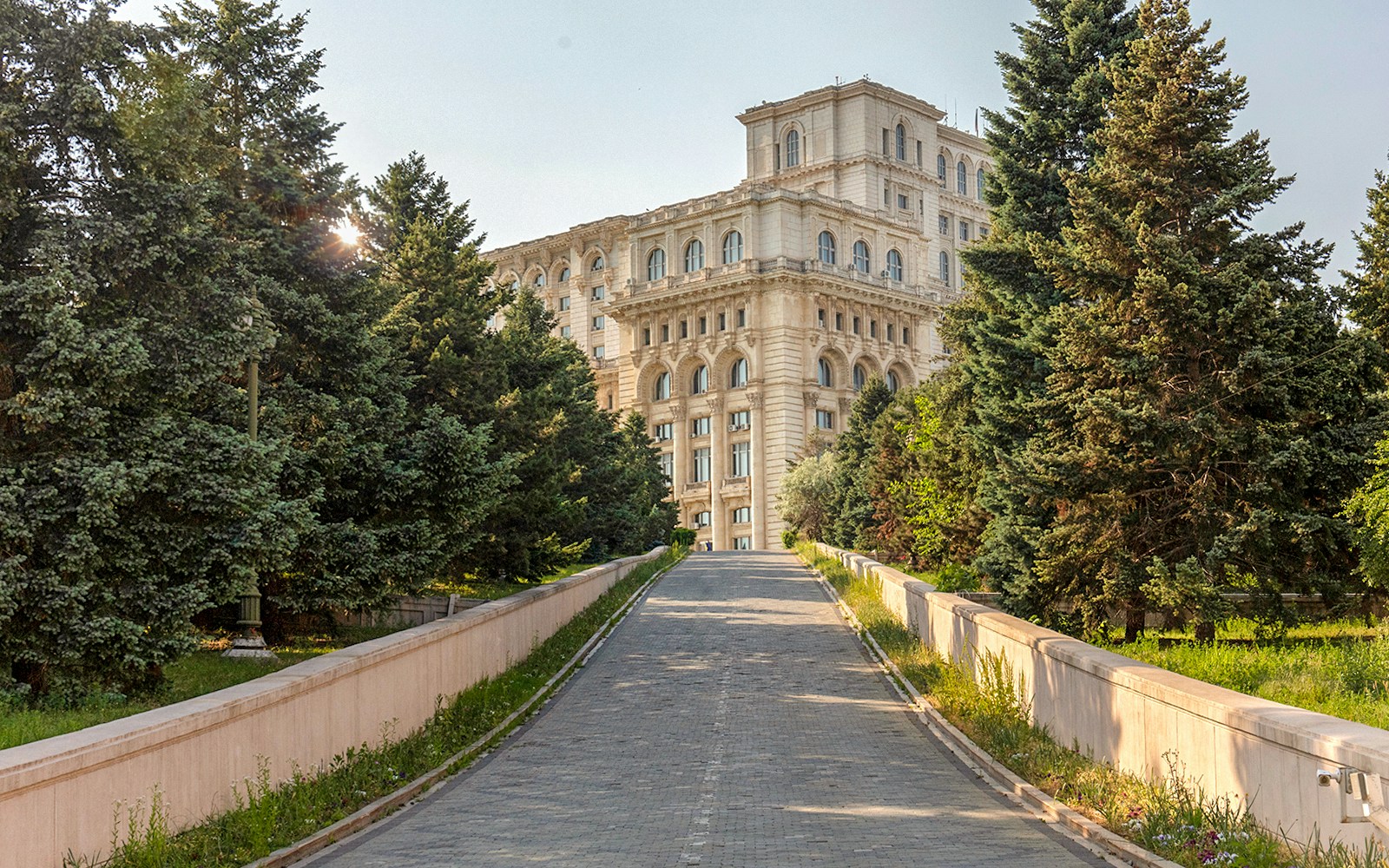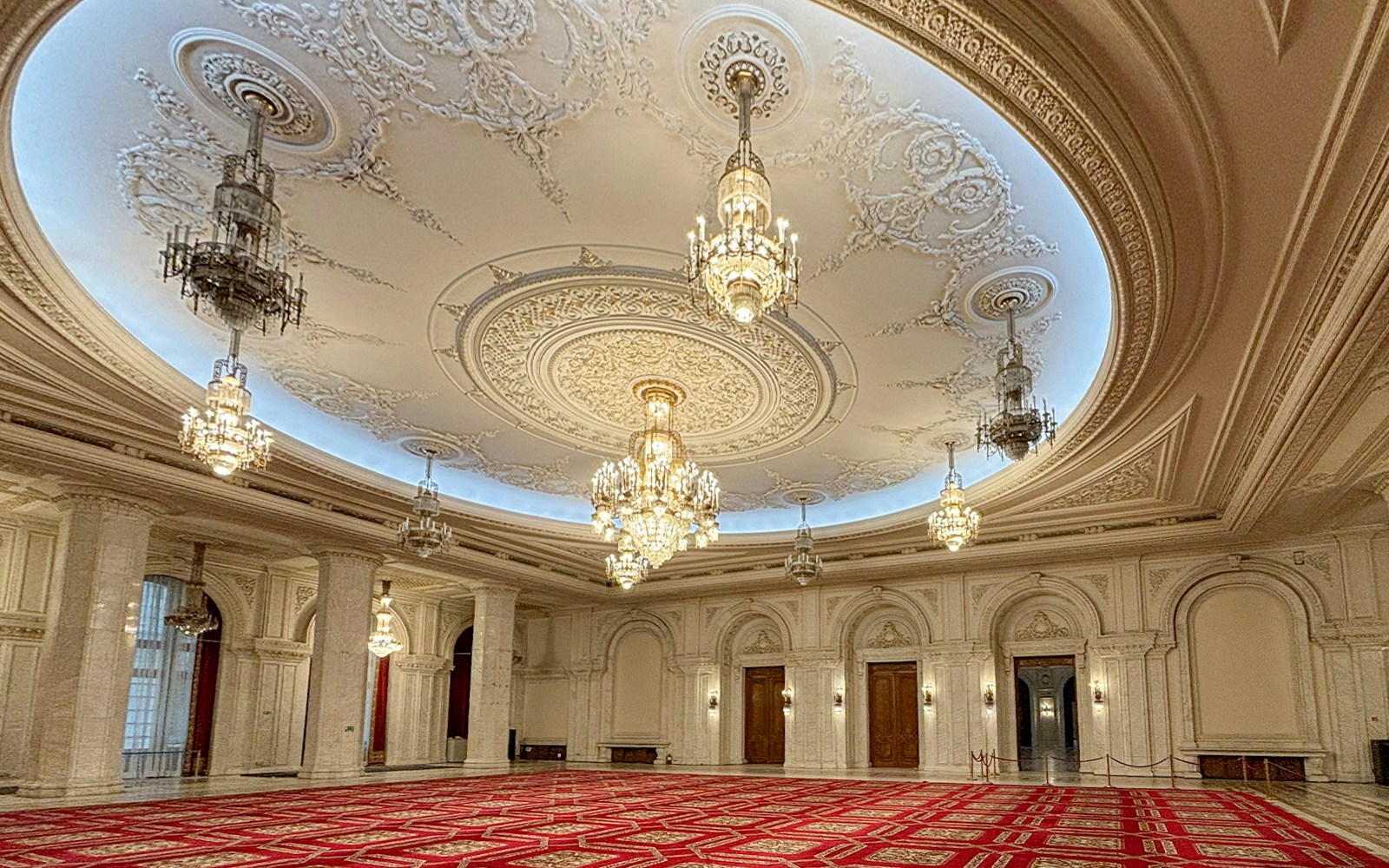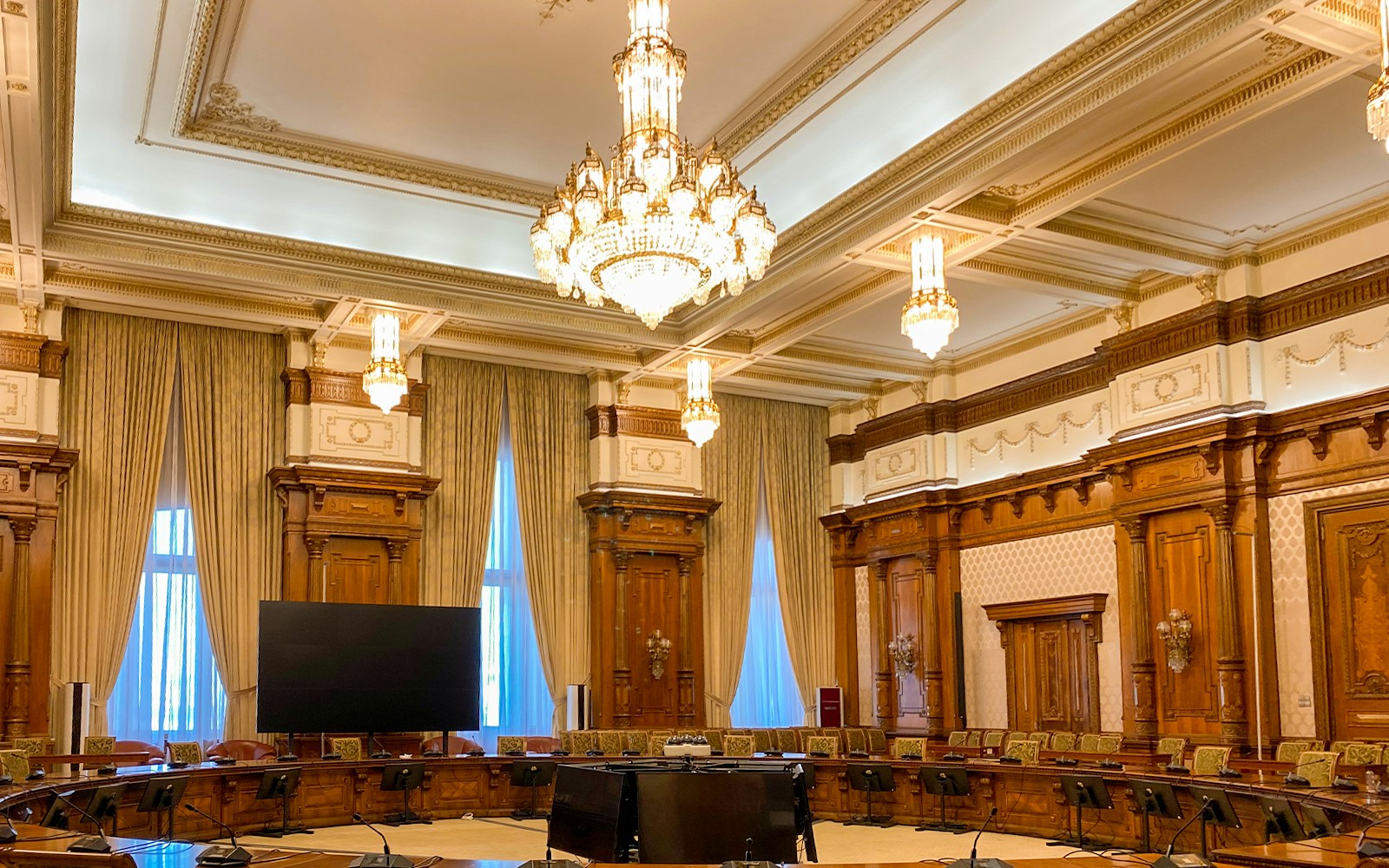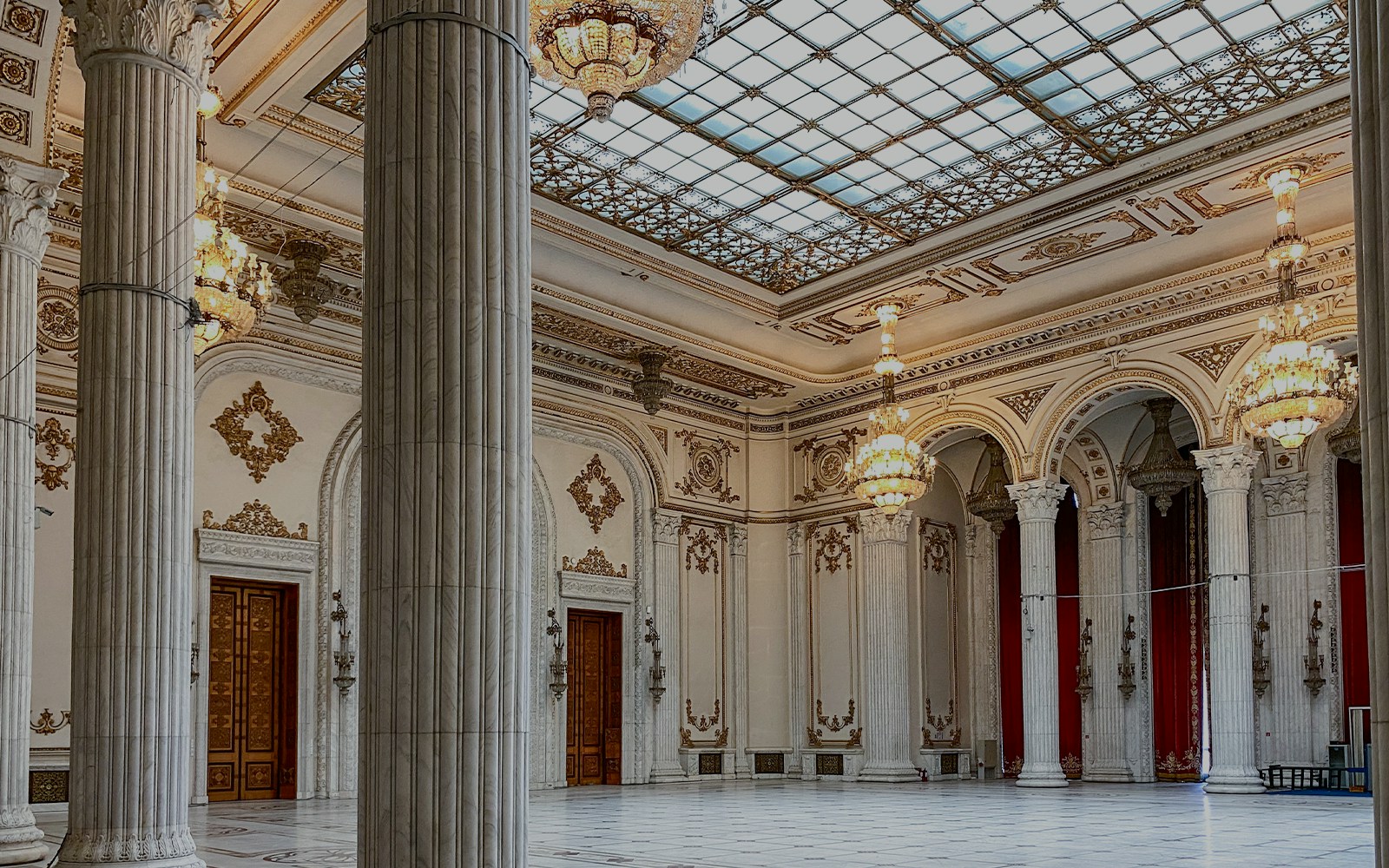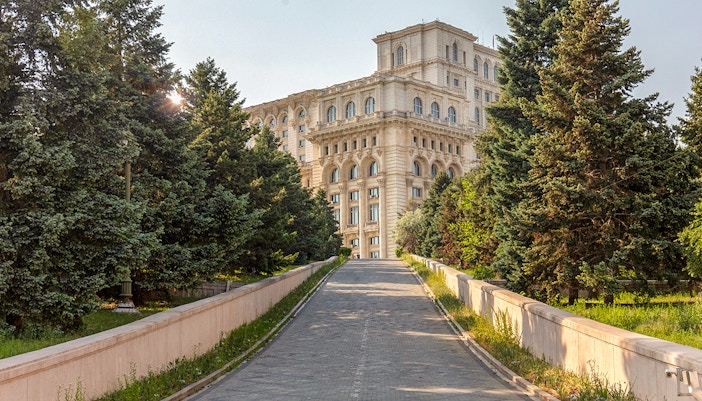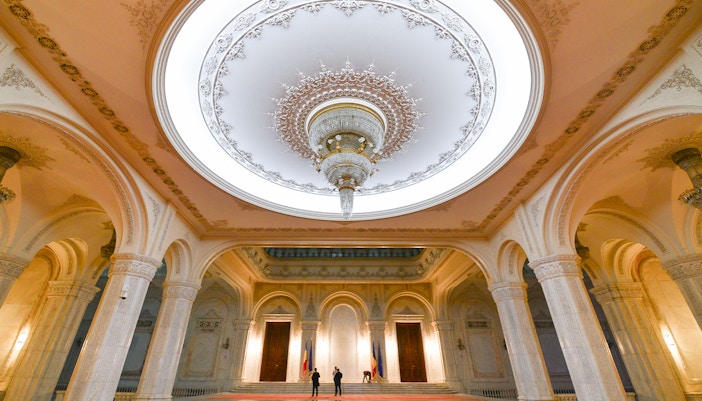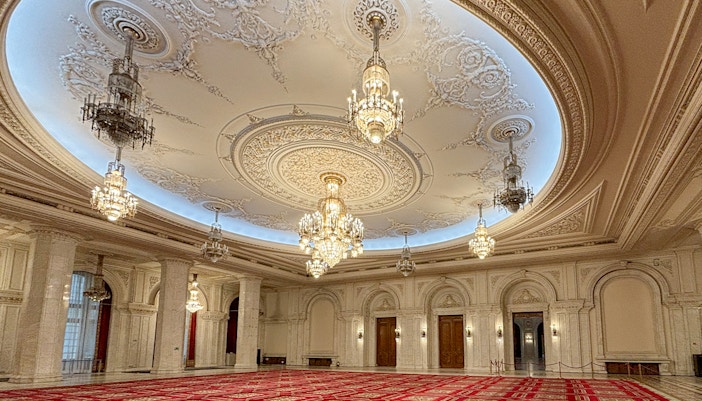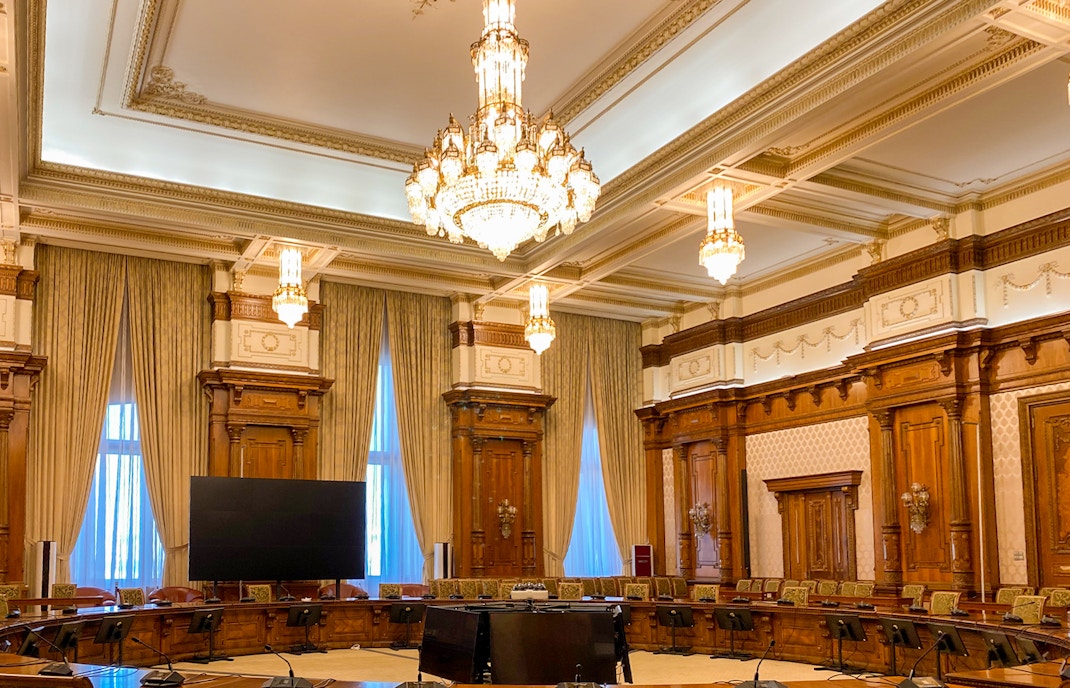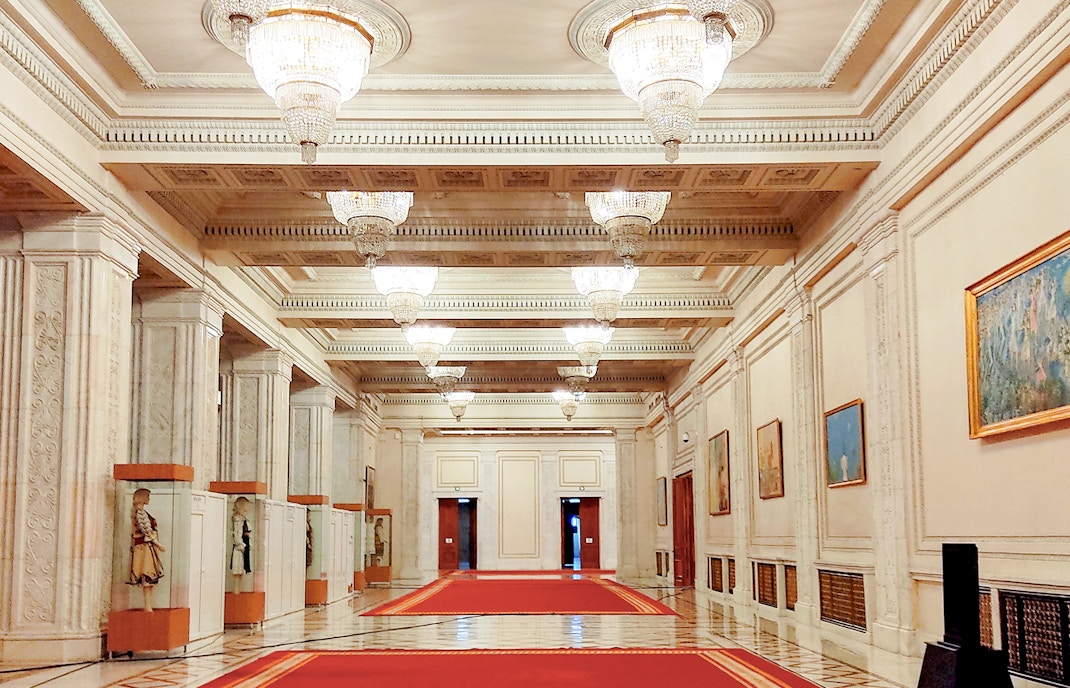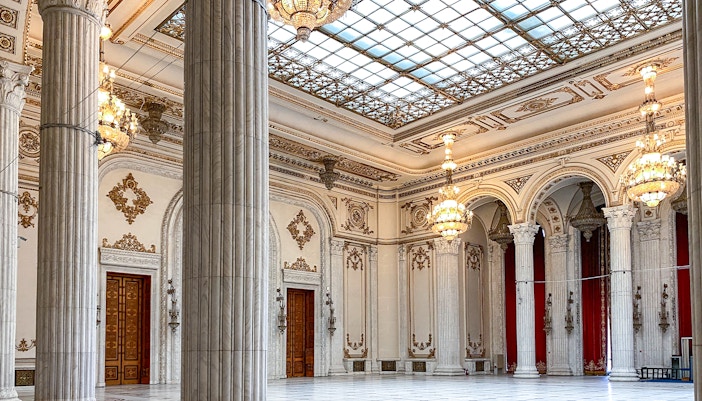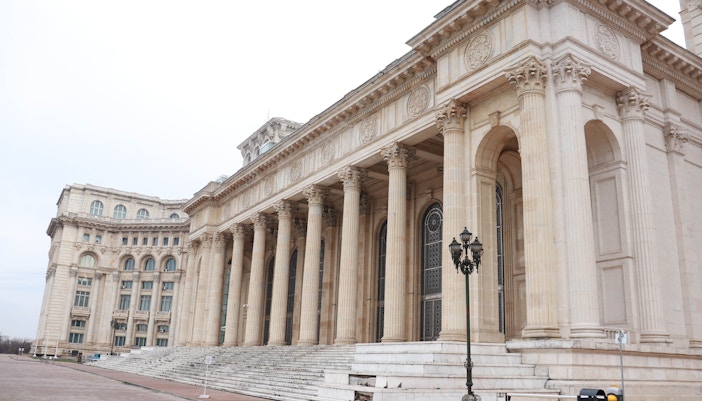The main entrance, or the official entrance of Bucharest's Palace of Parliament, is a spectacle on its own, with two giant staircases on either side of the room built specifically for the King and his wife’s grand entry during events. You are greeted by a beautiful red carpet and an unmissable chandelier as soon as you enter the Romanian Parliament building, setting the tone for what to expect in terms of grandeur and architecture.


